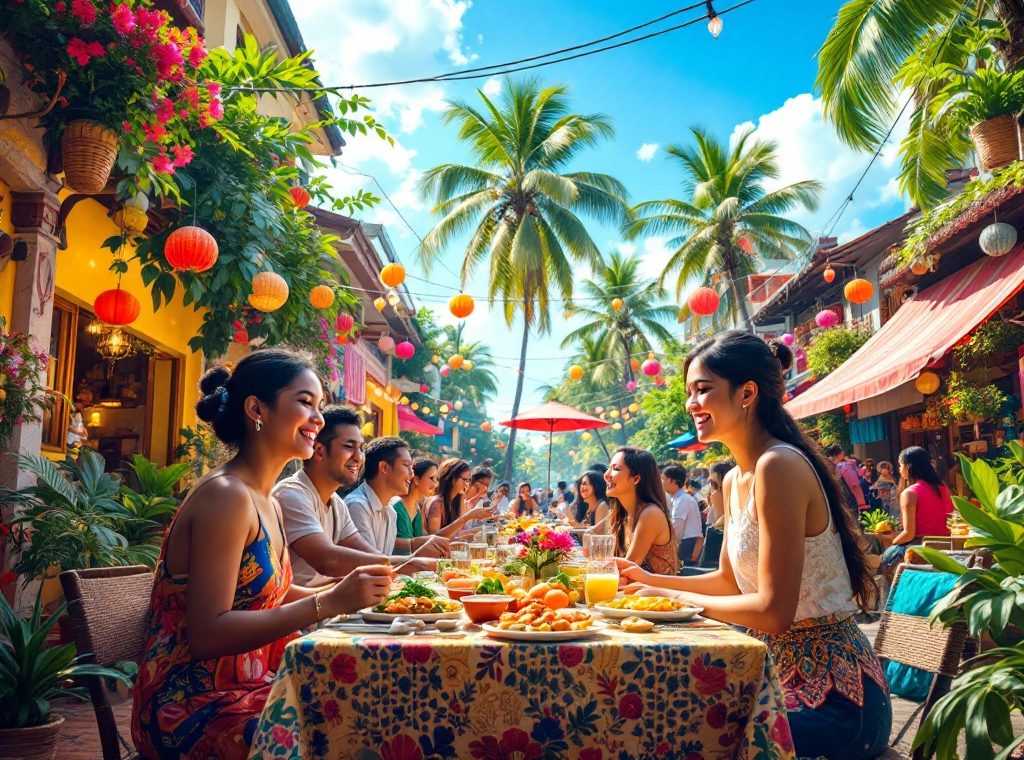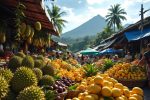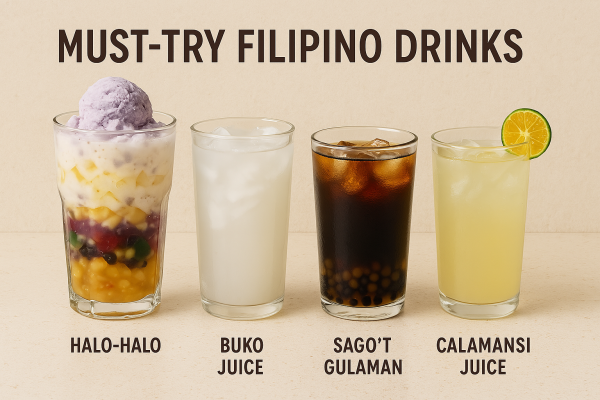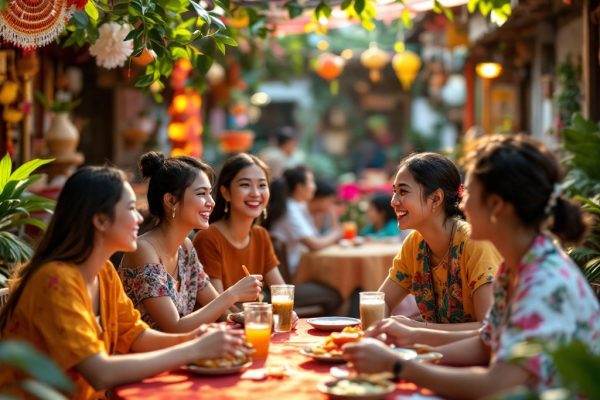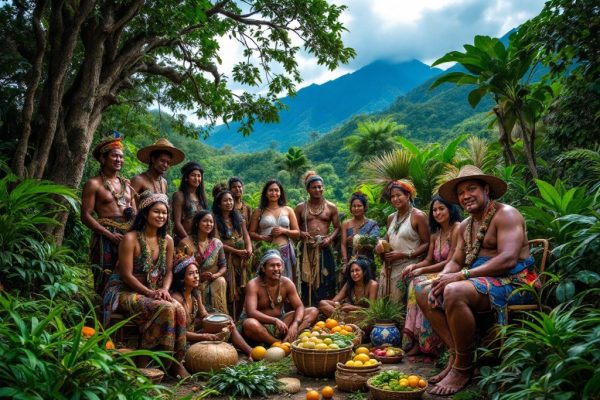Filipino Culture: Everything You Must Know Before Your Travel
Immerse yourself in the vibrant tapestry of Filipino culture, renowned for its warm hospitality and deep-rooted family values. From lively fiestas honoring patron saints to the unique “Bayanihan” spirit of community unity, discover a rich heritage. Explore two official languages, Filipino and English, alongside diverse regional dialects. Learn basic Tagalog phrases to enhance your interactions and navigate customs like the respectful “Mano” gesture. Delve into delicious cuisine, from adobo to lechon, and experience the communal “Kamayan” dining tradition. Plan your trip with essential travel tips, understanding the tropical climate and currency, and embrace sustainable practices. Uncover the heart of the Philippines, a truly unforgettable destination.
Important information
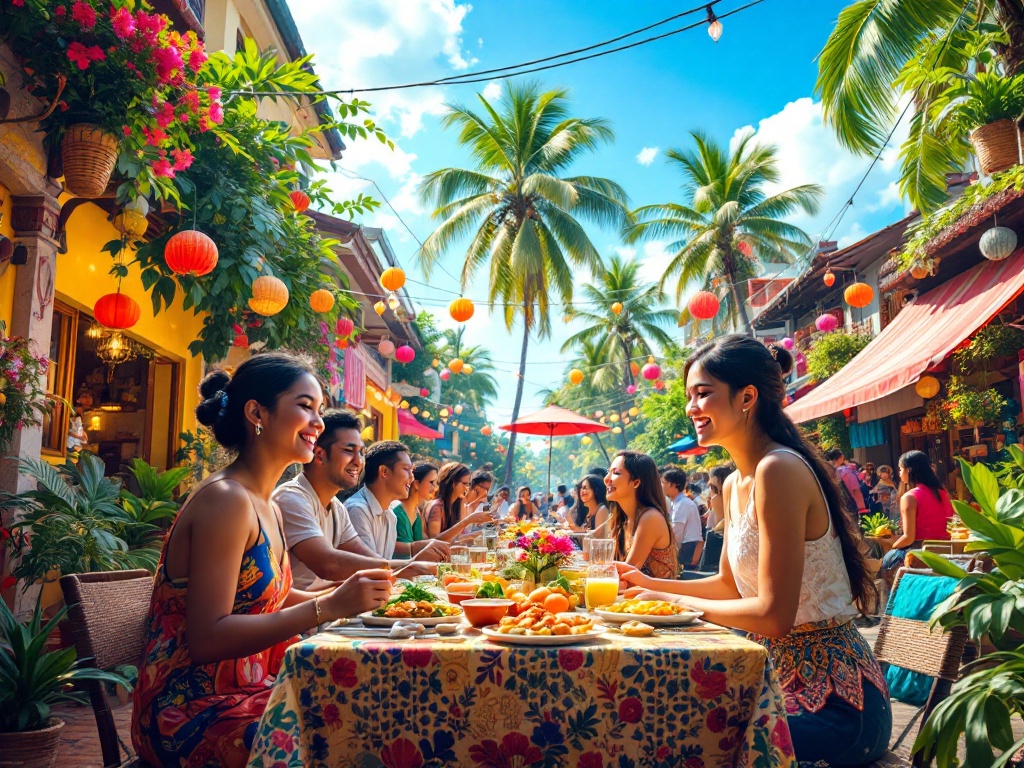
- Filipino culture is deeply rooted in family values, hospitality, and strong community ties, often expressed through vibrant festivals and celebrations.
- The Philippines has two official languages: Filipino (based on Tagalog) and English. Knowing basic Tagalog phrases enhances interactions, while English is widely used in business and government.
- Respect for elders is paramount, demonstrated through the “Mano po” gesture and polite language using “po” and “opo.” Modest dress is appreciated, especially in religious or traditional settings.
- Filipino cuisine is a diverse blend of flavors. Dishes like adobo, sinigang, lechon, and lumpia are must-tries. The “Kamayan” dining experience (eating with hands) is a unique cultural practice.
- The country has a tropical climate with three seasons: hot summer (March-May), rainy season (June-November), and cool dry season (December-February). The Philippine Peso (PHP) is the currency, and jeepneys/tricycles are common modes of transport.
Introduction to Filipino Culture
Filipino culture is renowned for its warm hospitality and deep-rooted family values. Traditions and cultural practices play a vital role, especially during festivals like fiestas. These celebrations honor patron saints and hold great cultural significance.
The Importance of Tradition and Culture in the Philippines
Filipino culture is deeply rooted in tradition, influencing everything from social interactions to celebrations. Fiestas, vibrant festivals, exemplify this heritage, strengthening community bonds and showcasing time-honored customs. Close family ties and respect for elders are paramount, demonstrated by the “Mano” gesture. “Bayanihan,” the spirit of communal unity, further enriches this vibrant culture. Furthermore, religion, particularly Roman Catholicism, plays a vital role in shaping Filipino values and traditions, serving as a cornerstone of life. Key aspects of Filipino culture include strong family ties, vibrant celebrations, and a deep sense of community.
Understanding the Filipino Spirit of Hospitality
Filipinos are renowned for their warm hospitality, a value deeply ingrained in their culture. This welcoming attitude is evident in their social interactions, often making visitors feel like family. This stems from a strong sense of community and respect, truly making the Philippines a unique destination.
Language and Communication in the Philippines
The Philippines recognizes both Filipino and English as official languages. Filipino, based on Tagalog, serves as the national language. English is crucial for government operations, education, and commerce. The Philippines also has a vibrant array of regional dialects. Some of the most widely spoken include Cebuano, Ilocano, and Hiligaynon. Waray and Bicolano also contribute to the nation’s diverse linguistic landscape.
Official Languages: Filipino (Tagalog) and English
The Philippines boasts two official languages: Filipino and English. Filipino, derived from Tagalog, serves as the national language. English plays a crucial role in government, education, and commerce. This bilingualism facilitates communication and unites the diverse regions of the archipelago. Over 175 languages and dialects are spoken across the islands, including Cebuano, Ilocano, Hiligaynon, and Waray.
Common Dialects: Cebuano, Ilocano, and Hiligaynon
Cebuano, Ilocano, and Hiligaynon are among the Philippines’ most prominent regional languages, contributing to a rich linguistic landscape. Other languages, such as Waray and Bicolano, also add to this diversity. This variety reflects distinct cultural identities and showcases each region’s unique traditions. While Filipino and English serve as the official languages, these regional variations add depth and complexity to communication, making interactions fascinating. A single word can hold different meanings across regions, further demonstrating the country’s vibrant heritage.
Basic Filipino Phrases for Travelers
Learning a few basic Tagalog phrases can significantly enhance your interactions with Filipinos.
Greetings
- Magandang umaga (Good morning).
- Magandang hapon (Good afternoon).
- Magandang gabi (Good evening).
Expressing Gratitude
- Salamat (Thank you).
- Walang anuman (You’re welcome).
Other useful phrases include Kumusta ka? (How are you?) to show you care, and Paumanhin (Excuse me) or Tao po (Is anyone there?) to get someone’s attention. Even these simple phrases can create a positive impact.
Filipino Social Etiquette and Practices
Respect for elders is shown through the “Mano” tradition, where a younger person gently presses an elder’s hand to their forehead.
Modesty is highly valued and reflected in Filipinos’ attire.
Formal greetings, such as handshakes or nods, are common, especially with strangers.
Polite language is essential, with frequent use of titles like “Sir” and “Ma’am”.
A small gift is a thoughtful gesture when visiting someone’s home.
Removing one’s shoes before entering a home is customary.
While personal space is valued, Filipinos may stand closer than some are used to during conversations.
Using “po” and “opo” when addressing elders shows additional respect and deference.
The Custom of Mano and Other Greetings
Respect for elders is deeply ingrained in Filipino culture, most prominently displayed through the *mano po* tradition. In this custom, a younger individual bows slightly and gently presses the elder’s right hand to their forehead, a gesture symbolizing a blessing. While *mano po* is iconic, other greetings such as handshakes, nods, or smiles are also customary. Further emphasizing respect, Filipinos integrate honorifics like “po” and “opo” when addressing elders, ensuring conversations are imbued with politeness.
Showing Respect to the Elderly
Respect for elders is deeply ingrained in Filipino culture. Showing respect through polite language is essential, particularly using words like “po” and “opo“. The “mano po” gesture, gently taking an elder’s hand and touching it to one’s forehead, further embodies this tradition. This beautiful custom reflects profound cultural values.
Dress Code and Conservative Attire
When traveling in the Philippines, respectful attire is appreciated, particularly when visiting churches, temples, or traditional communities. Favor modest clothing such as longer skirts or pants and shirts with sleeves instead of shorts and tank tops. This demonstrates respect for local customs and traditions. Wearing appropriate attire not only shows respect but also helps you blend in and avoid unwanted attention. Consider packing lightweight, breathable fabrics that offer coverage while remaining comfortable in the tropical climate.
Filipino Family and Community Values
Family plays a vital role in Filipino culture, extending beyond the immediate family to include a broad network of relatives. Extended families often live together or in close proximity, facilitating regular gatherings, especially during holidays. These gatherings strengthen bonds and uphold traditions.
This interconnectedness stems from “kapwa,” a concept of shared identity that connects families and communities, emphasizing loyalty and mutual support.
Bayanihan, the Filipino spirit of unity and cooperation, embodies the practice of helping one another, particularly during difficult times. This strengthens community ties and demonstrates the value of collective effort, highlighting the importance of community in Filipino life. The act of neighbors assisting a family in building a house exemplifies this spirit. Despite the strong sense of community, family remains the foundation of Filipino society.
The Central Role of Family in Filipino Society
Family is central to Filipino life, providing a crucial support network. Extended families often share a home or live nearby, fostering close bonds through frequent gatherings and upholding traditions.
Respect for elders is deeply ingrained and essential. Filipinos prioritize family above all else, often placing individual needs second. This emphasis on loyalty and belonging shapes daily life and decisions.
Bayanihan: The Spirit of Helping One Another
Bayanihan, a cherished Filipino tradition, embodies the spirit of neighborly help. Picture an entire community uniting to relocate a house—this remarkable act of kindness perfectly illustrates Bayanihan’s essence. It showcases cooperation, unity, and selfless giving, highlighting the Filipino value of helping others without expecting anything in return. This beautiful tradition strengthens community bonds, reinforcing the power of collective effort.
Festivals and Celebrations in the Philippines
Filipino life is deeply interwoven with festivals, honoring saints and fostering strong community bonds. These fiestas are a vibrant blend of religious ceremonies, lively celebrations, and colorful parades. Christmas in the Philippines is a unique and extended experience, stretching from September to early January. Traditions like Simbang Gabi, the pre-dawn masses, and Noche Buena, the grand Christmas Eve feast, define the season.
MassKara Festival
Bacolod City’s MassKara Festival, with its vibrant masks and costumes, celebrates the city’s resilience.
Kadayawan Festival
Davao City’s Kadayawan Festival is a thanksgiving for the harvest, showcasing the region’s rich culture with street dances and elaborate floral floats.
Moriones Festival
The Moriones Festival in Marinduque offers a different perspective, a Lenten tradition where masked penitents reenact the story of Longinus, the Roman centurion.
Significance of Fiestas and Patron Saints
Fiestas are integral to Filipino life, honoring patron saints and strengthening community bonds. These vibrant celebrations showcase each town’s unique cultural heritage and beautifully express its traditions.
Unique Filipino Festivals: MassKara, Kadayawan, and Moriones
Bacolod City’s MassKara Festival is renowned for its vibrant masks and costumes.
Davao City’s Kadayawan Festival celebrates a bountiful harvest and the region’s diverse cultures.
Marinduque Island’s Moriones Festival provides a unique Lenten experience, with masked penitents reenacting the story of Longinus in a powerful display of faith.
Christmas Traditions in Filipino Culture
Filipino Christmas traditions are a vibrant blend of indigenous customs, Spanish colonial influences, and American traditions. A cornerstone of the celebration is Simbang Gabi, a series of nine dawn masses leading up to Christmas Eve. It fosters a deep sense of community and devotion. Christmas Eve, known as Noche Buena, is marked by a lavish feast. Family and friends gather to share a meal and celebrate together, a true highlight of the season. Adding to the festive atmosphere are the ubiquitous parol, star-shaped lanterns symbolizing hope and light, a cherished Filipino Christmas decoration.
Filipino Cuisine and Dining Customs
Filipino cuisine offers a vibrant tapestry of flavors, blending indigenous ingredients with Spanish, Chinese, and American influences. A national favorite, adobo, features meat braised in a savory sauce of vinegar, soy sauce, garlic, and peppercorns. Sinigang, a tangy tamarind-based soup, combines meat and various vegetables. For festive occasions, lechon, a whole roasted pig, takes center stage. Lumpia, savory spring rolls, provide a popular snack. Street food abounds, with options like isaw (grilled chicken intestines), balut (fertilized duck egg), and flavorful fish balls.
The Kamayan Experience
The unique dining experience of kamayan involves eating with your hands, fostering a sense of community and shared enjoyment. Food is traditionally served on banana leaves alongside rice.
Hygiene First
Thorough handwashing before and after the meal is essential.
Exploring Filipino Food and Street Delights
Filipino food is a vibrant tapestry of flavors, blending indigenous ingredients with Spanish, Chinese, and American influences. Street food isn’t just a convenient meal; it’s woven into the fabric of Filipino life, fostering social connections and cultural experiences. Visitors should savor iconic dishes like adobo, a rich meat braised in vinegar, soy sauce, garlic, and peppercorns. The tangy sinigang soup is another must-try, along with lechon, the crispy-skinned roasted pig that embodies Filipino celebrations. And who could resist lumpia, those irresistible savory spring rolls?
Must-Try Filipino Dishes
- Adobo: a rich meat braised in vinegar, soy sauce, garlic, and peppercorns.
- Sinigang: a tangy and savory soup.
- Lechon: crispy-skinned roasted pig.
- Lumpia: savory spring rolls.
Adventurous Street Food Delicacies
- Balut: fertilized duck egg.
- Isaw: grilled chicken intestines.
- Fish balls: a popular street food snack.
- Kwek-kwek: deep-fried quail eggs.
- Halo-halo: a refreshing shaved ice dessert.
By exploring local markets and eateries, you’ll uncover the heart of Filipino cuisine and experience its authentic soul.
The Kamayan Dining Experience
Kamayan, the Filipino tradition of eating with your hands, emphasizes sharing and the communal nature of meals, fostering a deeper connection with fellow diners.
Travel Tips for Visiting the Philippines
The Philippines enjoys a tropical climate, with warm, humid weather prevailing throughout the year. The average temperature hovers around a pleasant 26.6°C (79.9°F). The country experiences three distinct seasons:
- Tag-init or tag-araw (summer) from March to May,
- Tag-ulan (the rainy season) from June to November,
- Tag-lamig (the cool dry season) from December to February.
Currency
The official currency is the Philippine peso (PHP). One US dollar is equivalent to approximately 55 PHP (as of August 2023). While major city establishments often accept credit cards, carrying Philippine pesos is recommended, particularly when venturing into smaller towns or islands.
Getting Around
Colorful jeepneys and motorized tricycles are popular public transport options. Taxis and ride-hailing services are also readily available in cities. Inter-island travel is facilitated by domestic flights and ferries, connecting the major islands.
When you visit, consider embracing sustainable travel practices. Support local businesses and communities, opt for eco-friendly accommodations, and minimize your plastic use. Respect the environment and wildlife, being mindful of your impact on the local culture.
Understanding the Tropical Climate
The Philippines has a tropical maritime climate, known for hot and humid weather. The year is divided into three distinct seasons:
- Tag-init (summer) from March to May.
- Tag-ulan (the rainy season) from June to November.
- Tag-lamig (the cool dry season) from December to February.
The average year-round temperature is around 26.6°C (79.9°F).
Currency: The Philippine Peso (PHP)
For travelers to the Philippines, understanding the value of the Philippine peso (PHP), the nation’s official currency, is crucial for effective budgeting.
Transportation: Jeepneys and Tricycles
Jeepneys, the Philippines’ primary mode of public transportation, are instantly recognizable for their vibrant colors and crowded seating. These rolling canvases bring a unique artistic flair to the streets. For shorter journeys, particularly in smaller towns and cities, motorized tricycles offer a nimble alternative.
Embracing Sustainable Travel Practices
Embrace sustainable travel by minimizing your environmental impact. Conserve resources like water and energy, and dispose of waste properly. Support local businesses and communities. Show respect for nature by opting for eco-friendly tours and accommodations. Make your travels count. Here’s how:
- Conserve resources: minimize your water and energy usage during your travels, and dispose of waste responsibly.
- Support local: choose locally owned businesses, restaurants, and accommodations to directly benefit the communities you visit.
- Respect nature: opt for eco-friendly tours and accommodations that prioritize sustainability and minimize their environmental footprint.

